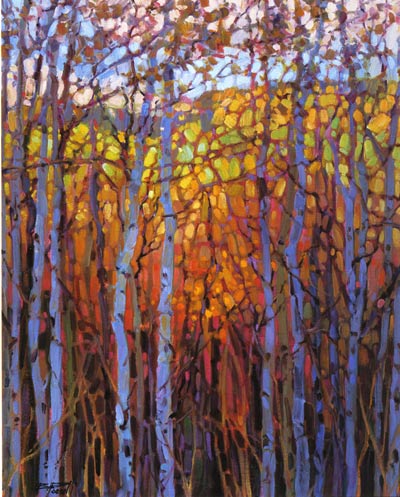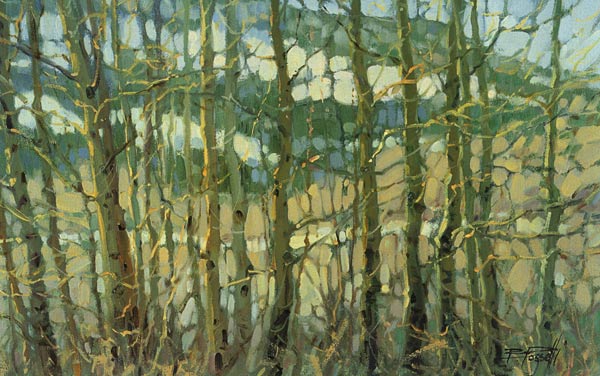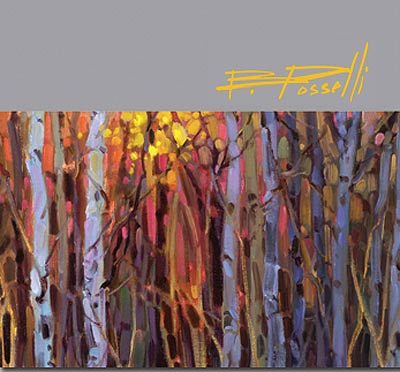Image of the Day, March 7, 2012
 Wednesday, March 7, 2012 at 10:47PM Tweet
Wednesday, March 7, 2012 at 10:47PM Tweet By Donna Poulton
“And there were the trees, clumped together in patches of woods left standing between stretches of fields—the sunlight, broken and spotted, streaming through tangled branches, illuminating trunks, bent, twisted and straight, that cast shadows across the … ground.” -- Bonnie Posselli
Utah artist Bonnie Posselli is well known for her red-rock images of the desert southwest and her painterly pastoral landscapes of rural Utah farmland. She counts John F. Carlson, LeConte Stewart and Edgar Payne among the artists whose techniques and styles have informed her work … but they never painted like this. Her paintings, Through the Looking Glass and Subtlety are strong images of delicate light held together by a tapestry of branches and luminosity.
 Bonnie Posselli, Through the Looking Glass, 1992, oil 30x 24 in. Credit: Bonnieposselli.com The broken color and tonal variations transport the viewer to sun-drenched cathedrals--the branches acting as the lead in the stained glass windows--holding the picture together. The tonal impression of light and movement reverberate in these scenes painted by this talented artist.
Bonnie Posselli, Through the Looking Glass, 1992, oil 30x 24 in. Credit: Bonnieposselli.com The broken color and tonal variations transport the viewer to sun-drenched cathedrals--the branches acting as the lead in the stained glass windows--holding the picture together. The tonal impression of light and movement reverberate in these scenes painted by this talented artist.
 Bonnie Posselli, Subtlety, 1994, oil 10x 20 in. Credit: Bonnieposselli.comHer book, The Paintings of Bonnie Posselli can be found at BonniePosselli.com:
Bonnie Posselli, Subtlety, 1994, oil 10x 20 in. Credit: Bonnieposselli.comHer book, The Paintings of Bonnie Posselli can be found at BonniePosselli.com:
 Credit: bonnieposselli.com
Credit: bonnieposselli.com
 Artist,
Artist,  Bonnie Posselli,
Bonnie Posselli,  John F. Carlson,
John F. Carlson,  LeConte Stewart,
LeConte Stewart,  Utah,
Utah,  landcape,
landcape,  tonal impressionism | in
tonal impressionism | in  Bonnie Posselli
Bonnie Posselli 



